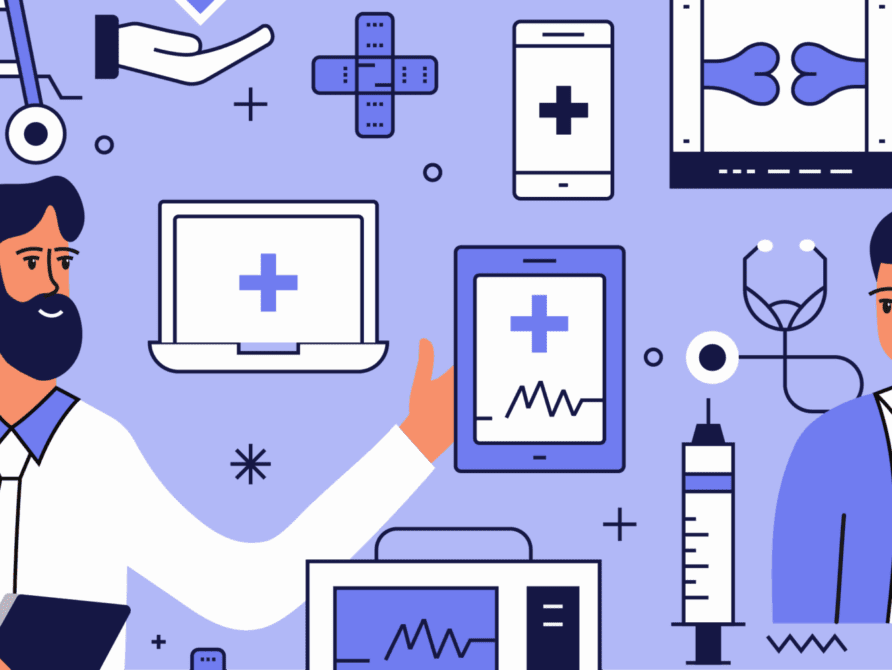Article
Low-risk, high-value: Seven AI use cases benefiting community hospitals
Rural, critical access and community hospitals are facing mounting operational, administrative and financial challenges while also managing the care needs of the communities they serve. At Altera Digital Health, we are constantly exploring ways that health IT can deliver value to these organizations without straining resources further.
In that spirit, here are some low-risk AI use cases we are exploring to help ease the burden on these hospitals, their clinicians and staff members:
1. Ambient listening
 Ambient listening is a great example of a low-risk AI use case that aids providers without circumventing their decision-making. Systems like Nabla, which is integrated with Paragon® Denali, can “listen” to patient-provider interactions and automatically generate draft notes and documentation for review. To take this a step further, future iterations could also ensure key details from a patient’s history are integrated longitudinally into the patient’s record. For example, if a patient has a chronic condition and it is tracked in the longitudinal record, the provider can reduce repeat questions during the patient encounter while maintaining care continuity.
Ambient listening is a great example of a low-risk AI use case that aids providers without circumventing their decision-making. Systems like Nabla, which is integrated with Paragon® Denali, can “listen” to patient-provider interactions and automatically generate draft notes and documentation for review. To take this a step further, future iterations could also ensure key details from a patient’s history are integrated longitudinally into the patient’s record. For example, if a patient has a chronic condition and it is tracked in the longitudinal record, the provider can reduce repeat questions during the patient encounter while maintaining care continuity.
2. Intelligent patient history search
While information exchange has improved over time, providers still often must sift through dozens of documents to find information they need at the point of care. AI could be used to surface the most relevant parts of a patient’s history based on their current condition. If a patient presents with a broken bone, for instance, AI could highlight past diagnoses like osteoporosis while deprioritizing less relevant conditions like hypertension. This contextual filtering would save time and support better decision-making by ensuring important details are not missed in a mountain of data.
3. Automated document and invoice processing
Smaller hospitals often rely on administrative teams to manually enter data from invoices and other documents from vendors. To help overburdened, understaffed teams, AI could instead scan these documents and extract key details like vendor name and account codes to free staff for more strategic work.
4. Smarter patient registration
 AI-powered document scanning and optical recognition could also streamline patient intake. Patients could snap photos of their IDs and insurance cards from home, and then the system could “read” that information to pre-populate records and verify coverage. This would help shorten wait times and reduce front-desk workloads, which is especially beneficial for smaller hospitals where staff members often wear many hats.
AI-powered document scanning and optical recognition could also streamline patient intake. Patients could snap photos of their IDs and insurance cards from home, and then the system could “read” that information to pre-populate records and verify coverage. This would help shorten wait times and reduce front-desk workloads, which is especially beneficial for smaller hospitals where staff members often wear many hats.
5. Reduced ‘metawork’ for clinicians
Providers often spend time on what I refer to as “metawork”—non-clinical tasks required for responsibilities like regulatory and compliance reporting. For example, I recently visited a hospital where the entire cardiac wing was not being properly reimbursed. Upon further examination, the hospital discovered that though smoking cessation questions were frequently documented in the EHR, there were discrepancies in the quality reporting and payment in turn. AI can help identify and fill gaps in reporting based on existing documentation or conversation transcripts, helping to complete metawork without adding clicks.
6. AI-assisted medical coding and billing
Medical coding is both labor-intensive and critical to hospital revenue. Instead of having staff manually interpret provider notes to assign billing codes, hospitals could implement AI that populates the most likely codes that staff members can then easily review. This added efficiency could be particularly helpful to healthcare organizations in geographies where finding skilled, experienced medical coders and billers is a constant challenge.
7. Claims optimization and pre-correction
Moving along the revenue cycle, AI can also analyze patterns in claims denials and suggest preemptive corrections before submission. This would help speed up reimbursements and reduce accounts receivable delays. This is especially valuable for small hospitals that depend heavily on timely insurance payments and uninterrupted cash flow.
Low-risk AI for lasting change
These AI use cases demonstrate how incremental improvements can push healthcare organizations forward without compromising safety or quality. And because of Paragon Denali’s cloud-based, containerized architecture, clients can implement new innovations at their own pace, based on available resources and organizational priorities.
Learn how Paragon Denali can drive sustainable progress at your hospital, one step at a time, here.












